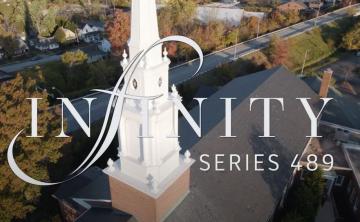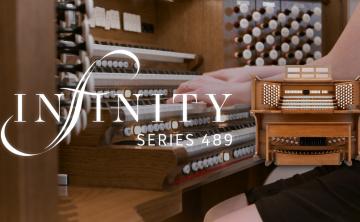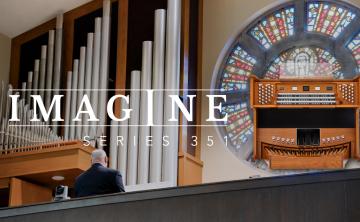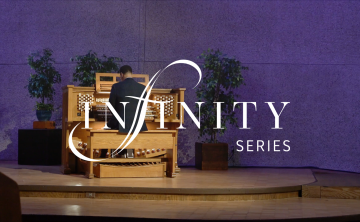St. Mary's Cathedral, Sydney, Australia, celebrates their new Rodgers Infinity Organ!
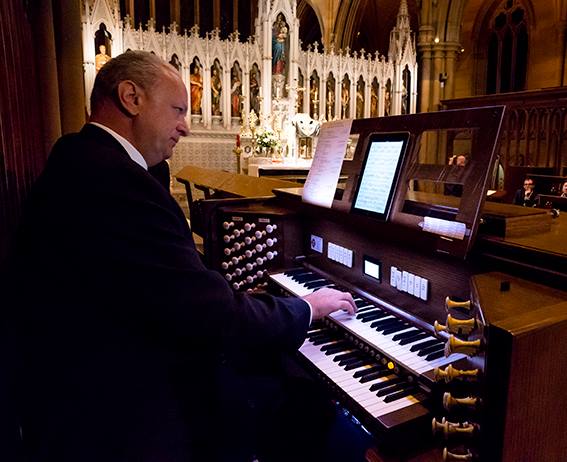
One of the oldest cathedrals in Australia, St. Mary’s is a classic English-style gothic church, situated in the heart of Sydney. Representing the spiritual origins of the Catholic Church in Australia, St. Mary’s has the honor of sustaining what is considered to be the longest running musical institution in Australia.
Nearly 200 years old, the St. Mary’s Cathedral Choir is a world-renowned choral group, having performed for Pope Benedict XVI in Rome as part of a 2010 tour. As part of daily choral recitations, the necessity for an organ is fundamental to the St. Mary’s Cathedral Choir.
Used as an accompaniment and for solo recitations, the story of the St. Mary’s Cathedral organ is as rich in history as the church itself.
Thomas Wilson is the Director of Music at St. Mary’s. He was kind enough to spend some time with us for the purposes of this piece in order to shed some light on why St. Mary’s chose to use a Rodgers Infinity 243 MV organ.
MUSIC AT ST. MARY’S
“There’s been a choir here at St. Mary’s before they even had priests. The group has continued in various different forms and has never really stopped. We think therefore, that the St. Mary’s Cathedral Choir is the oldest musical institution in Australia.
There have been two cathedrals built on this site and there have been various attempts to solve the problem of the provision of organ music in the cathedral over the years. Firstly there was the pipe organ that was brought out to be part of the cathedral, but unfortunately both the church and the organ burnt down. We don’t know a lot about it, but it was probably the first organ in this part of the world to have a full pedalboard and would have been quite an instrument for it’s time.
When the current cathedral was being built, there was a plan for an organ to be installed. However, it never really happened according to the architect, William Wardell’s vision. Something that was thought to be temporary was built on the floor of the cathedral. That lasted a very long time but never very satisfactorily.
In the 1960’s, the Cathedral Choir was refounded with the purpose of singing at the front of the cathedral, instead of the gallery at the back. The organ was in the gallery but it wasn’t quite what it could’ve been. Ronald Sharp, who went on to build the organ in the Sydney Opera House, was asked to build an instrument to accompany the choir near the sanctuary of the cathedral. That organ is still there and although it is very beautiful, it is very limited.
In the 2000’s, there was a determination to solve the organ question once and for all. There were going to be two organs – a big one at the back to drive the congregational singing and to play solo repertoire and a smaller organ near the front to accompany the Cathedral Choir.
However, instead of two organs, only one was built – the smaller choir one that’s in there at the moment. In 2010, the decision was made that the choir should be actually in the sanctuary, behind the altar, which is really some distance away from the pipe organ.
Unfortunately, it was impossible to have the two musical things happening together, that is, the choir and the organ. The organ, no matter how sensitively it was being played, would always play over the top of the singing and was impossible for the organ and the choir to actually be together in unison. So we needed to do something, especially given the unique space and the limitations of space in the sanctuary, which is where the choir sings.
It wasn’t possible for us to think about building a brand new pipe organ there. But we needed something that could get us going straight away. So, I knew that of the electronic organs that I was aware, the only ones that I would be happy with would be Rodgers. So I got in touch with the local Rodgers representative, Kerry who said straight away “We can help.”
In no time at all, a Rodgers organ was brought in and we were able to try and see how it would work. Straight away, we knew that this Rodgers organ was going to solve our problem. Ever since then, we’ve tried three different models, configurations of speakers and other things. This has allowed us to reach the point where finally, we were able to more or less order a custom instrument that was exactly to our specifications. The organ also has a bespoke audio system that takes into account the various needs of the choir and the unique cathedral acoustic.”

HOW ST MARY’S USES THE RODGERS ORGAN
“The organ is principally an accompanimental instrument, although it can and it does play solo repertoire. In fact, because we have choral services sung by the choir accompanied by our Rodgers organ every day of the week, because of where we are and because of the status of the church, our services are really quite well attended. We’re sure that it’s the most heard organ in all of Australia.
It needs to accompany the kind of repertoire that the Cathedral Choir sings and that’s quite unique. It’s mainly Gregorian chant, some of which is accompanied, some of which is not. We sing a lot of unaccompanied music from the Renaissance and when we do sing accompanied repertoire, it tends to be orchestral reductions of masses by people like Mozart, Haydn or sometimes quite contemporary compositions by composers like Benjamin Britten or James MacMillan, which could call for a very wide range of options in terms of the organ registration.
But we didn’t need it to be a large instrument, so we went for quality over quantity. That what was so exciting about the proposition from Rodgers. We were able to say, ‘Well we probably don’t need one of your biggest organs, we need only two manuals, we want great flexibility of registration, we want all the mod cons in terms of playing aids, we want it to be comfortable and easy to get around the console and we want it to sound great’. Those were the main determining factors and all of those were very aptly met.”
PLAYING THE RODGERS ORGAN
“The Rodgers Infinity 243MV organ, like all Rodgers organs, is a sympathetic instrument. I’ve played various electronic organs in different parts of the world for years. When I was studying at the Royal Academy of Music in London, at that time, the big organ in the Royal Albert Hall was out being restored and there was a Rodgers installed in there to great success.
When the pipe organ was brought back into commission at the Royal Albert Hall, the Rodgers organ was moved to the Royal Academy of Music and became one of our practice instruments. I spent a lot of time practicing on that. I loved it, it stood head and shoulders above other organs.
In coming to make the decision on an organ for here at St. Mary’s, I did a little bit of research and looking around at other possibilities. Nothing else came close. A lot of the decision also came with Kerry’s willingness to actually show me the best – not entry level products, but going straight to what we really need.”
THE RESPONSE TO THE RODGERS ORGAN AT ST. MARY’S
“I would say there’s been a steady growing appreciation of music at the cathedral and the organ is the real heart of that. As I said, it gets played every day, it’s part of what we do here. Whilst people may not know the intricacies of what’s going on with the Rodgers organ, they do know that the music here works in a very homogenous way and that’s because of what we’re able to do with this very flexible instrument.
In the organ community, there are strong opinions about whether organs must only be acoustic, or whether they can be digital and whether sampling technology is useful, etcetera. The truth is that organs have always been machines. It’s not like playing a violin, where it’s always just the product of string.
With an organ, there an element of machinery involved and mechanical means to make a sound. I would see that as a continuum, from the earliest days of there being a pipe and air being blown through it, to the great organs of the 19th century, through to the wonderful things that are being done with pipe organ manufacture today.
The digital revolution has to be seen as being part of that. When people know we have a digital organ, and it has been controversial, there are certainly opinions about that. However, I maintain that it has allowed us to get on with the business of doing what we do in a very flexible way. I think most people who’ve come and heard the sound of the organ with the choir, doing what it is we’ve tasked it to do, have been very satisfied with that.”
COMPARATIVE SOUNDS
“We’ve just had an Assistant Director of Music arrive in the last six weeks and I’m always interested to hear how our Rodgers organ sounds in the hands of a different player. I didn’t tell him much about the Rodgers organ, I just said go and spend time with it and here’s how the menus work.
He’d been an organ scholar at Westminster Abbey prior to coming here and I did almost flippantly say to him that I expected to hear the Westminster Abbey organ!
I have to say, I was really surprised! We sang a piece of Elgar which I’ve heard several times, actually performed in Westminster Abbey and it really did sound like the Abbey organ, which is one of my favorite instruments in the world.
I was interested to hear a fresh person’s perspective and the fact that he registered using his ears, that that was possible with the Rodgers organ, I think that that for me is a standout musical discovery.”
WHY RODGERS?
“What I want most of all from an organ, regardless of what stop you’ve chosen, is a sympathetic musical noise. That it isn’t just ON/OFF. It’s actually a kind of Holy Grail to actually find it and be able to produce it.
It’s of course to do with so many factors. It’s the way the sounds are sampled in the first instance, how they are treated electronically, how they are then sent to the speakers, how you have the speakers configured and then how the building then reacts.
The organ is something we’re living with and every now and then we’re tweaking and it’s very possible to do that. But that’s what interests me about it. Just being able to get it as sympathetic an instrument as possible.
The design of the cathedral was taken into account for the installation of the Rodgers organ right from the very beginning. With the first instrument that Kerry brought in, we had the speakers on ground level and it sounded remarkable, very good indeed. But we always wanted to try what it would be like having the speakers up in the triforium gallery, like 5.1!
That works very well because of the stone and the reflective surfaces. The nature of the acoustic in here was the very starting point. It’s another aspect to it – if you have a pipe organ built for you, once it’s built there are small things you can do, but basically, that’s what you’ve got. We’ve got a whole new layer of possibilities for what we can do.
Another one of the reasons why we went with Rodgers is this. One of the elements of the driving factors in the electronic organ market seems to me the ability to sell to home users. So there are a lot of entry level products out there that sometimes get put into churches. I’ve encountered these more often than I would have liked and the fact is that they’re usually not up to the use that they receive. The durability of the build in many organs just doesn’t cut it.
It’s great that there are a variety of options for organs available. The organ sitting here in my office is built to be a home practice instrument. I’d never say it is poorly built, but it doesn’t have the same level of attention to detail that the Rodgers console we have up in the cathedral does. We need to know that when we go into the cathedral and switch the Rodgers organ on, it’s all going to work, it’s all going to feel right, it’s comfortable and it is.”
We’d like to warmly thank Thomas Wilson for his time and generosity in speaking with us for the purposes of this article. oin us in celebrating this stunning installation and uplifting testimonial at one of the oldest and most premier cathedrals in Sydney, Australia. Rodgers would like to acknowledge and thank Principal Organs for their continued excellence, which empowers the Rodgers vision to spread across borders and become reality.

